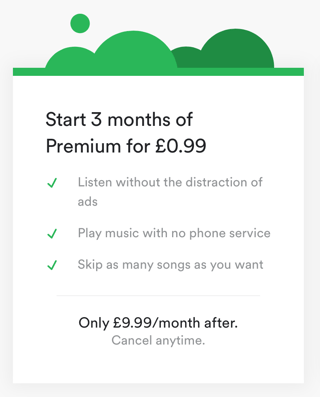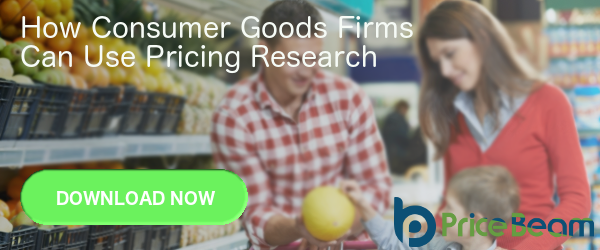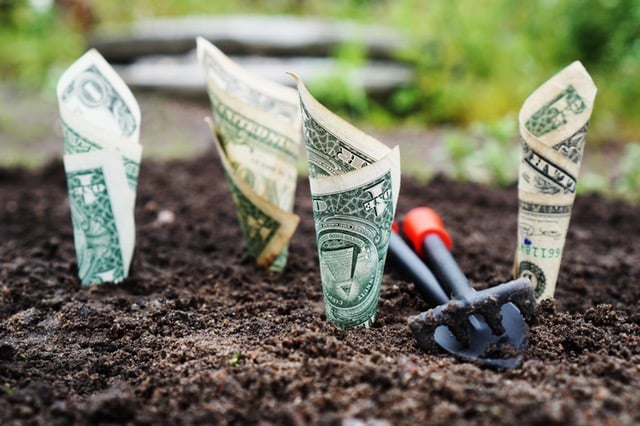Promotional Pricing: A Simple Pricing Strategy Everyone Screws Up
 PriceBeam
·
4 minute read
PriceBeam
·
4 minute read
.jpg?width=1024&name=pexels-photo%20(2).jpg)
I dare to say that there isn’t any mature for-profit business on this planet that has never used this pricing strategy. Not one. It’s in any businessman’s nature to occasionally lower the price or offering a better deal in some capacity, to reel in those price-sensitive customers and hopefully turn them into loyal customers willing to pay the full price.
Promotional Pricing Definition: Promotional Pricing (or price promotions) is a pricing strategy that involves offering products and services at a reduced price and/or improving the offering with the aim to increase sales and reach more price-sensitive customers.
The reason it’s so widespread is that it’s one of the easiest and most simple pricing strategies to employ. You will see sales increase instantly (yippee, we’re on a roll now!), customers love getting a good deal -- and all it took was altering a price tag. It’s too good to be true, huh? Now, many pricing experts will rule it out as a bad practice, because oh so many firms just can’t get right. But that’s an overreaction -- promotional pricing is, indeed, a viable pricing strategy if you are smart about it.
The Goal of Promotional Pricing
First, let’s take a step back and consider what it is you want to achieve with your promotional pricing strategy. Let’s assume you’re selling cereal. You have a solid customer base who gladly pay $2.50 for a box, and prefer your brand and have this cereal for breakfast everyday. Now you want to grow your business by getting more loyal customers -- you need new customers who haven’t tried your product before or tried it a couple of times but didn’t really give it a chance because they were indifferent between your brand and a cheaper option. Promotional pricing is all about reaching this segment -- you want to give them another shot at trying your brand by decreasing the risk of trying your product. After all, they don’t even know if they like it, so they need an incentive to try it without bearing too much risk of making a bad purchase (consumers really hate making unwise purchase decisions).
This is what the strategy is for -- incentivizing price sensitive customers to try your product by reducing their risk (that is, by lowering the price). Once they’ve tried it once, their perceived risk of purchase goes down massively as they now know what they’re getting. This is the sole purpose of promotional pricing, nothing more. The marginal benefit of incentivizing the customer to buy the product a second time (short-term, at least) is very small, and not worth it. As the perceived purchase risk is low, if the customer demands such a low price (i.e. a price promotion) to keep buying, he or she is not a profitable customer.
Impact on Existing Customers
While the goal is to target new customers, promotional pricing will inevitably have an impact on existing customers, too -- those customers that happily bought your cereal at $2.50 and had it everyday for breakfast. But what happens when you lower the price to, say, $2.00? Well, they probably stock up and buy 5 or 10 boxes (depending on how inconvenient they find storing the products), but their general consumption won’t increase massively. For some products with more sporadic purchase patterns, such as snacks, drinks and delicacies the general consumption level among existing customers will increase slightly, but not enough to make promotional pricing profitable when looking at existing customers in isolation as their price elasticity of demand is almost always inelastic.
Moreover, a reduced price will negatively impact their willingness to pay: after paying $2.00, going back to paying $2.50 is a bit unpleasant -- especially if price promotions are occurring too frequently, which leads us to the next section.
Dealing with Anticipation
Chances are your price promotions won’t be a one-time thing. New people enter the market all the time, and some may not have noticed your previous price promotion -- therefore, occasionally applying a promotional pricing strategy does make sense with regards to the sought acquisition of new customers. However, existing customers will be trying to detect a pattern in terms of frequency and time. And this is where most firms fail miserably: they make their price promotions too easy to anticipate by 1) reducing prices too frequently, or 2) by reducing prices at certain times of the year.
Returning to our cereal example, if price promotions are offered every other month, existing customers will only purchase at the discounted price: why would they pay the higher price, if they can just wait until the next promotion and stock up? And once such pattern emerges, there is little you can do to repair the damage. Existing customers now permanently perceive your full price as an unwise purchase (which they thoroughly hate, remember?), and once the stock runs out they will most likely turn to a competitor until your next price promotion.
Secondly, many firms will offer price promotions at certain times of the year such as around the holidays or specific seasons: while this is not as big a problem as too high frequency, it can still lead to delays of purchases and slight decreases in overall consumption as a result thereof. For example, Spotify has a nasty habit of offering 3 months of their Premium subscription almost free of charge around the Summer holidays.

The promotion runs the same time every year, from the beginning till the end of June -- this is both a pricing lesson on what not to do, and a friendly tip on how you can take advantage of poor pricing practices to get free Spotify Premium. I told you everyone got it wrong, didn’t I? Even a humongous firm like Spotify.
Summary: The Do’s and Don’ts of Promotional Pricing
This article has primarily focused on what not to do. This is not because we’re a negative bunch here at PriceBeam: but properly executing a promotional pricing strategy really isn’t rocket science as long as you don’t mess up. Lower your price occasionally to reel in new customers, but don’t make it a habit. If you’re not sure if you’re doing it too often, you probably are! As every industry is different, I can’t give you an exact number of times you should apply the strategy, but the point is you avoid showing a pattern and making it anticipatable.
Also, don’t make sales a goal in itself: remember that the sole goal of promotional pricing is to encourage first-time buyers to take the plunge and make a purchase, so even though it may seem like existing customers increase their overall consumption level, this is rarely a permanent change. Instead, you should look at how a price promotion impacts your long-term sales in the period after the promotion. At the end of the day, that’s what really counts.
.png?width=400&height=100&name=PBLogoTransparent%20(1).png)




